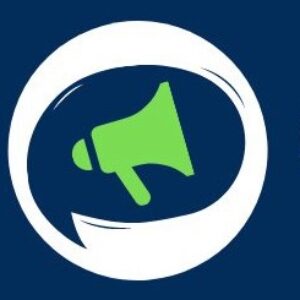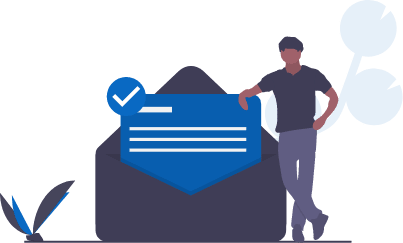When applying for a job and you’re asked to show proof that you’re the best man for the job, how do you go about it?
When applying for a job, the importance of a well-crafted resume cannot be overemphasized- when you’re not physically present, your resume fills in the gaps and speaks on your behalf.
What Is A Resume?
A resume, derived from a Latin word meaning summarize, is a document created by a person for the main purpose of representing their identity which includes skills, background, and experience. Resumes can be used for different reasons but they’re mostly used to obtain employment.
When applying for a job, it’s important to understand that there are other qualified and professional applicants like you. Recruiters spend less than 30 seconds reviewing each applicant’s resume, which means if you want to stand out and make your recruiter captivated and curious about your application, your resume has to be unique.
In this article, we’ll go through 7 steps you need to take to create a perfect resume.
Choose Your Preferred Resume Format.
In case you don’t know, there are three standard formats for writing a resume. What makes them different? Each format maintains the original resume sections but arranges them differently, and it’s best to pick the format that aligns with your work experience level and your professional goals.
- The Chronological Resume Format: This format puts your work experience in the limelight, it emphasizes your work and professional accomplishments. It highlights your work history in reverse order, from your most common, then moving backward. It’s the ideal format for candidates who are searching for a job similar to their previous role, students, entry-level candidates, and academic resumes.
- Functional Resume: In this format, the most important section is the summary of your skills, qualities, and training. It can also be called a skills-based resume which emphasizes the skills and abilities you add to any team whereas your work history takes a little recognition. It’s an ideal format for those creative jobs where a portfolio matters the most, military-transitioned civilians and candidates who don’t want to seem overconfident.
- Combination Resume: This format is also known as the hybrid resume which combines the two above. It highlights your experience and skill level. It’s the best for seasoned professionals with more than 10 years of relevant experience seeking to live up to their careers. It’s the ideal format for professionals targeting a particular position, Career changers, and also People with employment gaps.
Add Contact And Personal Information.
What’s the essence of having a perfectly crafted resume without having (correct) information about yourself on i? The best place to place your contact information and personal details(email and address) is at the top of your resume, this saves potential employers the stress of having to read through every single word on your resume before getting your information.
Here’s a list of the information to put on your contact information section:
- Your full name. Your first name then your last name
- Your current and reliable telephone number
- Your professional email address. If you have more than one email address, include your most recent and most active address to avoid confusion
- Your state and city and ZIP code.
- A link to your website or portfolio and a professional social media account.
Write Your Resume Summary Or Objective.
Do you think you have the best skills, and qualities for that job? Here’s where you can convince your potential employers and recruiters that you’re fit, skilled, and capable for the role. Consider this section as your ‘elevation pitch’ moment when you sell yourself in less than 4-5 sentence lines.
A resume summary: is a concise and comprehensive description of about 2-3 lines that highlights an applicant’s skills, qualifications, and career goals. If you have experience and have been in an industry long enough.
A resume objective: if you’re a first-time job seeker, returning to work after a long period, changing jobs, or applying for a new role in the same company then a resume objective is what you need to show your recruiter what you can help them achieve with your skill set. The objective will cover a short statement that stresses what positive impact and skills you’ll add to the company.
List Relevant Work Experience And Key Accomplishments
One thing recruiters are mostly interested in is your work experience. What was your role in your previous job? How well were you able to deliver? What major achievements did you make with your skills? And lastly, what do I gain by employing you? As your recruiter reads through your resume, these are the questions that your work experience section should answer. The scope of creating a perfect work experience section is by adding your real accomplishments in every role and job.
For each job, include at least 4 to 6 accomplishments and elaborate on them if needed. The recommended format to build your work experience section is to arrange it in a reverse chronological order
- The job role/title
- Company name
- Company’s location (also state if it was a remote location/job)
- Date of employment- month and year(day is not mandatory)
- Top 3 to 5 achievements and duties in bullet points.
Education Reference
Your education section is also an opportunity to show forth your knowledge in your industry. Properly filling your education section with accurate information can help prove your worth and give you a massive edge over other applicants.
Here’s how to arrange your education section orderly:
- Firstly, Display your highest level of education
- Add the name and location of the institution
- The month and year you graduated, but if you’re still ongoing a program, then include the expected graduation date.
- The level of degree you received or expected to receive (BNSC, BSC, MSC)
Relevant Skills For The Job Description
Creating a section for your skills is as important as the resume itself. These skills make your resume relevant to the position you’re applying for. It’s important to write at least 5 to 8 of your top skills. There are two types of skills you can include in this section:
- The hard skills are specific and gained through hands-on experience, training, and -mostly- education. These skills include marketing, writing, design, foreign languages, data analysis, and cybersecurity.
- The soft skills are self-developed skills. These skills include communication skills, leadership skills, critical thinking skills, problem-solving skills, organizational skills, time management skills, and teamwork skills.
Add Additional Resume Section
A typical resume would include all the above sections but what would make yours personalized and a little different? Extra information about yourself. Your resume could also include sections like this;
- Hobbies and Interests
- Internship experience
- Volunteer work
- Publications
- Projects
- Language
- Certifications and awards
Proofread And Edit
You’re already 95% ready at this stage but typos and grammatical errors can ruin your resume and all you need is to proofread and edit. If you think it’s too overwhelming you can always ask a proofreader or a family member to help you to reread it and make sure there are no mistakes and errors.
Aside from typos and grammatical errors, formatting errors can also be a problem, but you can keep these steps in mind as you edit your resume:
- Keep your resume short. A typical resume should be just a page long. However, For professionals with more than 10 years of work experience, a 2-page resume should be the maximum.
- Use appropriate fonts like Arial Helvetica or Times New Roman.
- Set the margins on each side of your resume to 1 inch.
- Save your document as plain text, a pdf, or a docx, and name it appropriately.
- Naming your resume appropriately is also important. You can name your resume in this format. First name last name- company name or specific job title- Resume.
Writing the perfect resume that I’ll land you that dream job is possible if you follow closely the steps discussed above. You should not also limit yourself, aside from the above steps, there are other key things you should incorporate in your resume like including keywords from the job description throughout your resume. Also, you might want to consider including a cover letter with your job application
References:





